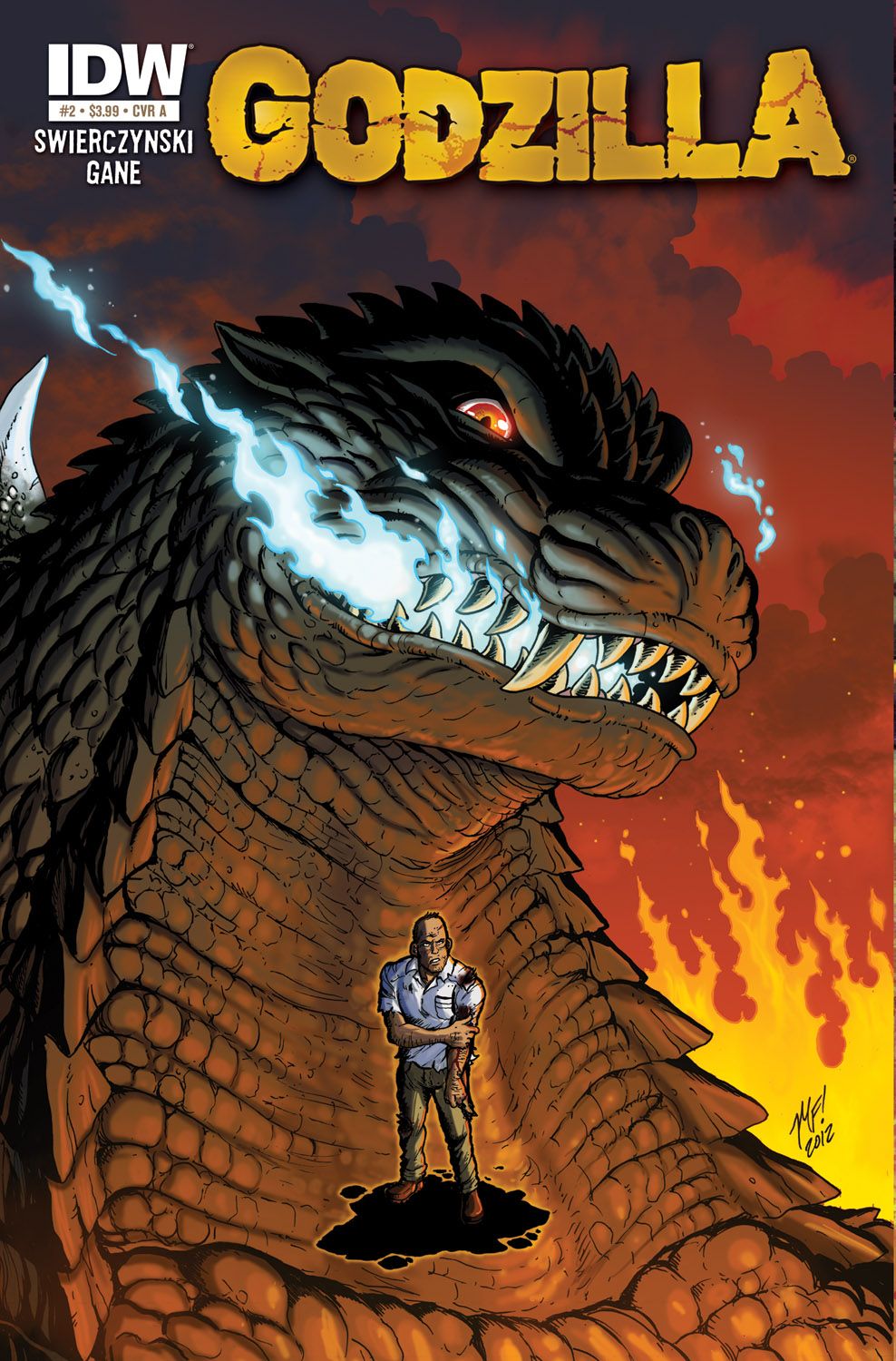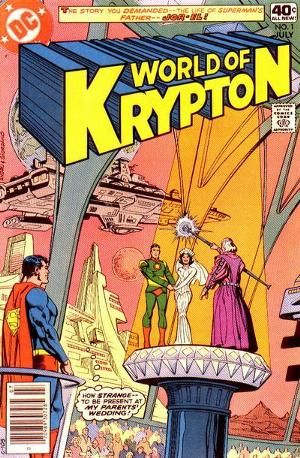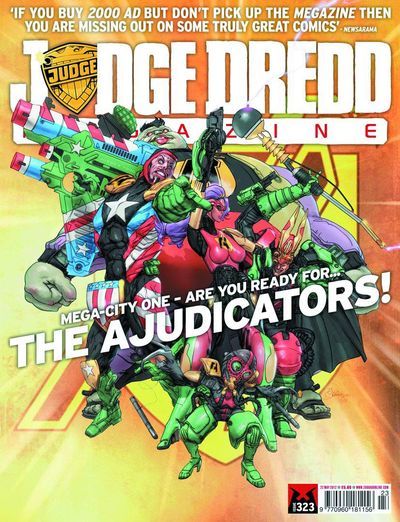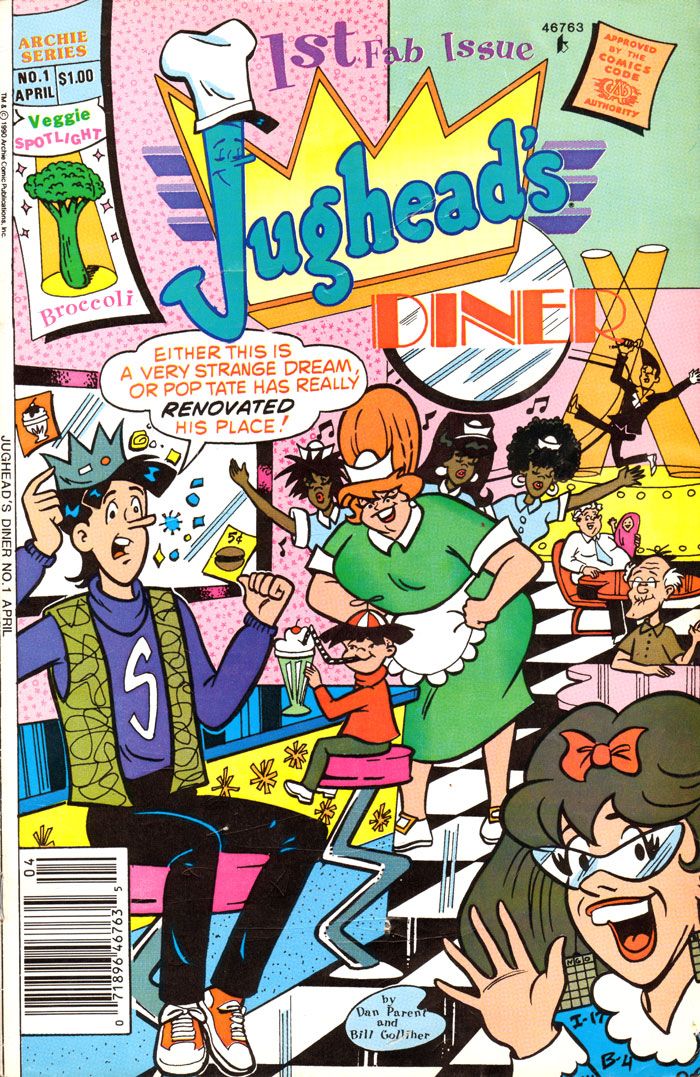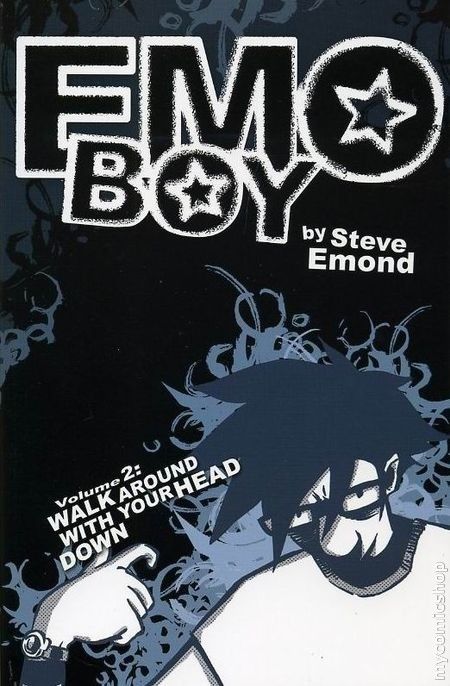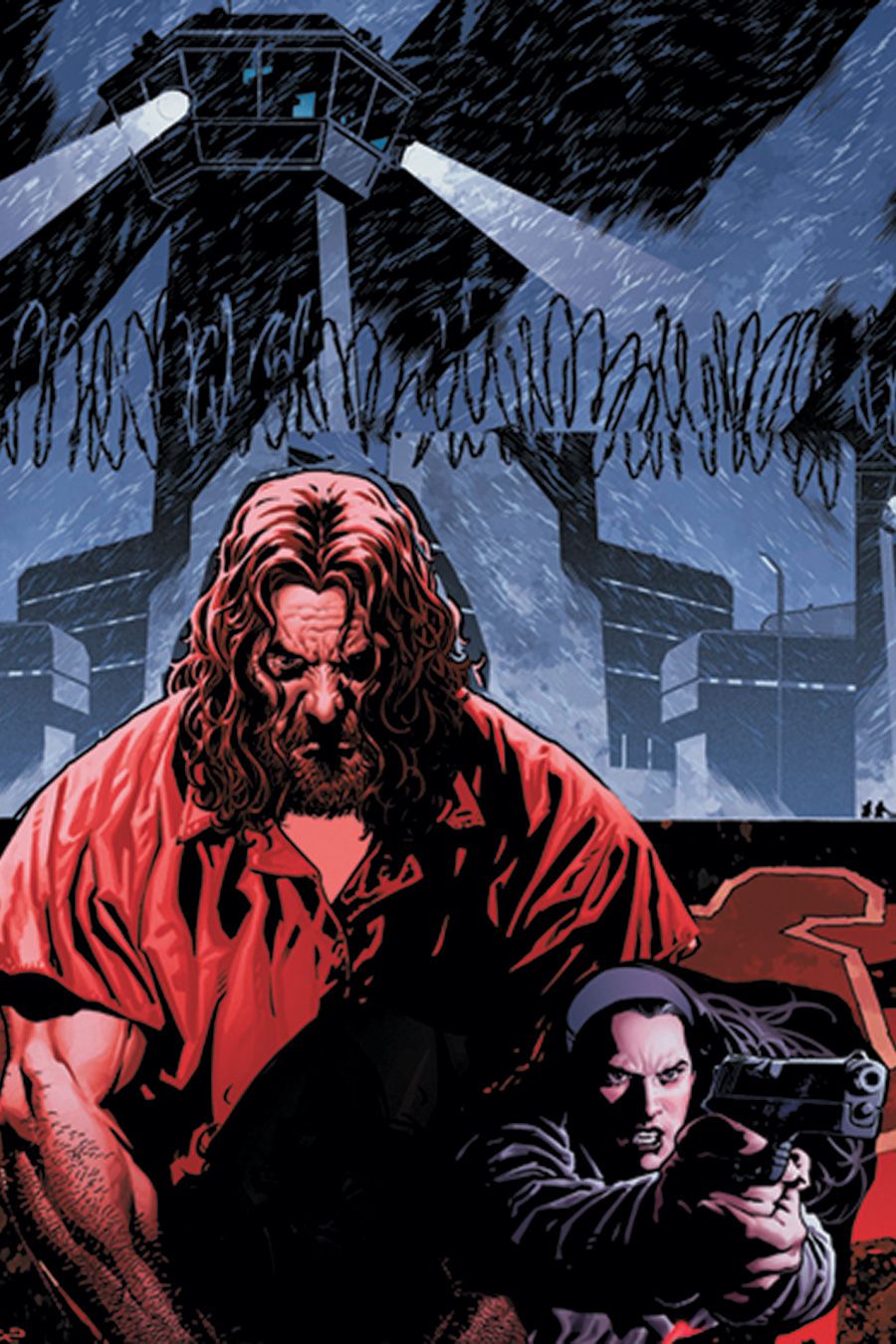Hello and welcome to What Are You Reading?, where each week we talk about what comics and other stuff have been on our reading piles. To see what the Robot 6 crew have been reading, click below.
*****
Michael May
I caught up on Duane Swierczynski and Simon Gane’s Godzilla this week, and I like it a lot better than the Kingdom of Monsters series that preceded it. The problem with KoM was never the art, but its story was sprawling and epic to the point of being unfocused. Swierczynski corrects that by presenting a small cast of interesting, central characters and letting us see the kaiju-infested world through their eyes. My only complaint is that I like the supporting characters better than the generic, tough-guy main character, but maybe that’s the way I’m supposed to feel at this point in the series. Swierczynski is very much aware of the action-hero genre as he’s writing this, but it’s too soon to tell if he’s commenting on it or just paying homage. I hope it turns out to be the former.
I also read a couple of space-related comics this week. Saga #6 continues the trend of marvelous unpredictability that I enjoy so much with that series. I was thrilled to read in the letters page that Vaughan has “a real ending in mind for Saga, but it’s still in the distant future.” I love that Vaughan’s creator-owned series all seem to function that way and always pay off. This is one to hold up next to Y: The Last Man as the way comics should be done.
I’m less pleased by the direction Saucer Country seems to be going. It’s cool that Paul Cornell has done his research on the UFO phenomenon and is putting together a story that seeks to make sense of the wildly different reports; I just wish he was structuring that story differently. In issue #6 (the one I just read), Cornell reiterates the plan to investigate the UFO phenomenon in the context of a presidential candidate’s campaign trail. As one of the characters says, “The places you’ll be going on your campaign tour – at almost every one of them we’ll be able to find some data point we can look into, because this myth continues to subtly shape every aspect of Western culture.” In other words, it doesn’t matter where we go looking for information, because UFO beliefs are so widespread that we’re bound to learn something new wherever we are. Unless I missed a part where they’re scheduling the tour to hit specific communities related to UFOs, that seems like a very haphazard way to conduct an investigation.
Saucer Country also worries me by having the lead investigator admit that there are so many different versions of the UFO story that none of it makes any sense when put together. That’s undoubtedly true in real life, but I wish that the story filled me with more confidence that there’s a real answer – at least a Saucer Country version of a real answer, however rational or fantastical – behind all of this. It’s possible that I’m unfairly comparing Saucer Country to W.A. Harbinson’s excellent novel, Genesis that also seeks to reconcile the various UFO reports into a cohesive theory. The difference is that Genesis inspires confidence that it’s leading the reader towards a specific conclusion. Saucer Country is as wild and hard to get my arms around as the UFO phenomenon itself. That could be exactly the feeling I’m supposed to have at this point and I’m simply impatient, but so far there’s not another hook to keep me interested beyond the investigation. I’m going to keep with it a while longer if only for the great art – I’m a big fan of Ryan Kelly, but Jimmy Broxton does a great job as well filling in this issue – but I’ll be looking for evidence that there’s some sort of real answer behind the mystery. Cornell can keep me on the hook a long time as long as there’s promise of a satisfying payoff.
Tom Bondurant
This week I read two Bronze Age Superman miniseries for the first time -- gasp! -- and enjoyed the heck out of both. It helped that they were linked thematically: one was 1978's World Of Krypton (written by Paul Kupperberg, pencilled by Howard Chaykin, inked by Murphy Anderson), and the other was 1982's Phantom Zone (written by Steve Gerber, pencilled by Gene Colan, inked by Tony DeZuniga). WOK is not to be confused with the John Byrne/Mike Mignola miniseries of about 10 years later. Essentially it uses then-existing continuity to tell Jor-El's biography, which naturally involves things like his discovery of the Phantom Zone and his push for a fleet of spaceships which, you never know, might come in handy someday. I recognized a few Silver Age stories, like the backstories of a couple of Phantom Zone criminals and Mon-El's brief visit to Krypton, but overall I was impressed with the blend between old and new. In fact, without going back and looking up the old stuff, I couldn't tell you exactly what was new and what wasn't. Lara Lor-Van gets a good bit of the spotlight too, which is nice. I will say, though, that the Mon-El encounter is a little unintentionally hilarious, because it comes just as Krypton is about to explode, and Jor-El is like, "Oh hi, nicetameetcha, here's a little souvenir, you really need to go now." The other thing is the art, which is about 85% Murphy Anderson I was curious to see how Chaykin would interpret the pulpy Silver Age Krypton, and I'm still curious. Still, it was a good read, and I hope DC reprints it in time for next year's Man Of Steel movie.
If and when that happens, DC really should pair WOK '78 with Phantom Zone, because initially they cover some of the same ground. That doesn't last long, however. The first issue builds pretty effectively to the "oh f___" moment where the villains are freed, and from there it's off to the races. Superman and the Zoners' patsy are stuck in the Zone, and their only hope of escape is a rumor relayed by Mon-El. Meanwhile, the Zoners send half the Justice League on a one-way trip to the outer planets and proceed to beat the tar out of the rest (plus Supergirl, who's appropriately portrayed as Superman's equal, and thus the last best hope for defeating them). It's pretty brutal for a thirty-year-old comic book -- not Geoff Johns brutal, but enough to make you wince as a rogue Kryptonian goes to town on a defenseless Green Lantern. The heroes don't go down easily, either, particularly Wonder Woman, who has a couple of good moments. It's just a really entertaining, suspenseful superhero story. Even Jimmy Olsen does some investigating, and alongside Batman to boot.
Finally, I know I said a lot about I, Vampire last week, but this week's #12 (written by Joshua Hale Fialkov, drawn by Andrea Sorrentino) continued its winning streak and made it a book I'll be looking forward to. The big zombie/vampire/zombie-vampire battle ends more transformations, not just for Andrew but for a couple of key supporting-cast members. A jaunty, almost self-aware appearance from Stormwatch adds to the fun, making it the third superhero presence (after Batman and JL Dark) to guest-star in the book's short life. I don't know how long Fialkov and Sorrentino can keep this up; but even if the book is still just finding its way, I like the tone it's taken.
Mark Kardwell
This week I picked up the latest Judge Dredd Megazine (#327) from the newsagent opposite work. I shamefully don't buy it every month, for a few reasons - every issue coming in a polythene bag is a helluva deterrent to casual buyers for starters. As time has gone on, the inclusion of a separate reprint comic packaged with the Megazine has became increasingly redundant. The best material will be reprinted in a commercially marketed edition, and if the reprint comic was created to showcase material from the nineties years to lapsed readers who've returned during the Diggle/Smith era, then they've already burned through that stuff and have started reprinting work from the Diggle/Smith era. Might be time for a rethink and a relaunch, Matt. Anyway, all that means I'll only buy the comic if I know from PR doing the rounds on the internet that the line-up inside the bagged-up Meg is solid gold: again, not giving much of a chance for a potential casual buyer to pick it up and buy it from a random browsing experience. And this issue has a lot that'd sell the issue from open exposure - great art in the lead strip by Batman: Death By Design's Dave Taylor, a strip by the commercially-proven Diggle/Jock team, a Stieg Larsson parody strip with art by the criminally under-estimated work of David Roach, a strip by Boo Cook, with that slick glossy style of his. Hell, the official blurb online for this issue doesn't even mention the talent by name, even for Snapshot, which is creator-owned! Instead, all the casual buyer has to be going on with is the Simon Davis cover, and it's not his best. It's dark and murky. Sharpen up your game, Tharg!
Brigid Alverson
I picked up the Jughead Double Digest #182 because it had a "That Wilkin Boy" story in it, and the first half of it is summer-vacation stories, old and new, about Jughead trying to mooch food, mostly on the beach. But about halfway in, it looks like someone put acid in the water cooler down at Archie HQ. I'm referring to Jughead's Diner, a surrealistic Jughead story that first ran in 1990. Jughead is transported, via a magic stool, into some sort of alternate universe and tasked with saving the local eatery from the slimy Sal Monila, evil proprietor of a restaurant chain. The plot is fairly simple, but the story (by Kevin Keller creator Dan Parent) is crowded with fascinating side characters and presented almost as if it were a stage musical, and Bill Gollisher's art throws a few new wrinkles into the standard Archie style. This digest presents a complete story in four short chapters. (Here's an article with some scans if you want to get a taste.)
More Archie madness: Steve Stern gave me a copy of the First Comics collection The Best of Zen Intergalactic Ninja, and in addition to an assortment of Zen comics written by Stern and illustrated Dan Cote, it includes the Zen comics published by Archie Comics in 1992. Judging from the other issues in this collection, the standard Zen story seems to be: Zen goes to some planet to scavenge a rare mineral; monsters attack Zen; Zen fights them and wins. The Archie comic, written by Stern and illustrated by Ross Andru and Mike Esposito, has an environmental theme, with Zen and a human boy, Jeremy, fighting a team of polluting super-villains, headed by the evil Contaminous, with their own team of environmental superheroes—Can-It, Pulp, Bottle Bandit, Lawn Ranger and Lights-Out. It's cheesy and fun, especially if read as parody. Cote's art in the early Zen comics was not really to my taste—it seems rather amorphous, and the palette is jarring—but the book also includes a 2008 comic with a more solid style that I liked quite a bit. And there's a nice introduction by Stern that sets out the history of Zen and his many travels through different media and publishers.
The first issue of Joe Harris and Martin Morazzo's Great Pacific won't be out until November, but it's being solicited in the September Previews so I guess this is as good a time as any to talk about it. Harris gave me a sneak peek, and I enjoyed it a great deal. It's an action comic with an environmental twist: A wealthy, playboy-ish oil heir stakes a claim to the Great Pacific Garbage Patch, intending to set it up as his own nation and clean it up. Everything goes horribly awry, of course, and our hero ends up facing an array of enemies, both familiar and exotic. It's a great, fast-paced, fun read.
Corey Blake
Still making my way through piles of graphic novels, some embarrassingly old, some just slightly old:
Emo Boy Vol. 2: Walk Around with Your Head Down by Steve Emond - This was originally published in 2007 when the emo subsculture was still part of the pop culture zeitgeist, making this satirical piece at risk of being dated as time goes by. But my wife and I discovered this series a couple of LA Times Book Fairs ago and have gotten a real kick out of it because the writing is sharp, the characters relatable yet silly, and the cartooning enjoyable. The idea is that a kid is so emo that he has emo superpowers. But these superpowers aren't for fighting supervillains, they're for him to go through high school with angst, depression, deep thoughts and poetry. While it's obviously making fun of fans of emo music, you can tell that Steve has an appreciation for it, so the series is playful without getting wrapped up in petty nastiness. Frankly I didn't expect the concept of the emoist kid in school to have enough story mileage but Steve Emond is clever enough to keep surprises coming with his tight cast and the world he builds around them. There's also a choose-your-own-adventure issue that's fun to explore, although I don't know if it was reprinted in the best possible way. Two pages are shrunk down and laid on their side to take up one page. Still it amps up the silliness and playfulness to good effect.
And then there's the online comics:
A Cartoonist's Worldview - The Guardian published this set of comics about a month ago from a pretty impressive line-up of cartoonists. I'd love to see more of this kind of thing regularly done by newspapers - original comics done by some of the most unique voices and artists today. Nicholas Gurewitch, Lilli Carré, Ivan Brunetti, and Modern Toss have fun exploring the mundanity of aspects of modern life. Gabrielle Bell reflects on trying to escape from the troubling world around us. Tom Gauld hilariously satirizes motivational slogans. Stephen Collins perceptively examines how our technology helps us reinforce instead of challenge our perspectives. And then there's Kate Beaton, lampooning the very platform she's been given by addressing sexism in the news media and its coverage of the political sphere. It's a bold move and I love it. It's perhaps the most biting of the set. But most sobering is Luke Pearson's strip of how our awareness of larger tragedies in the world is repeatedly obscured by simple day-to-day living. While I was expecting these comics to be more political or more directly reflective of current events, what I got was still exceptional comics about our lives. It's difficult for me to have a problem with that.
Insufferable by Mark Waid and Peter Krause (with Nolan Woodard and Troy Peteri) - Apparently Thrillbent.com got hacked earlier this week ago so I decided I should catch up on this series in case some internet gremlins took it away. Fortunately everything's fine again but it was good to run through the last handful of weeks. Peter Krause's art is sometimes surprisingly loose and Mark's writing has been stronger, but it's still engaging and enjoyable. The real interest though is seeing how the new language tools of digital comics are getting utilized on a regular basis. Will they remain as a novelty trick or will these devices get integrated into how comics are made on the digital landscape? I'm anxious to see more comics from Thrillbent. But aside from the larger issues, Insufferable remains a good read.
Tim O'Shea
DC Universe Presents: Savage #9-11: DC New 52 is taking a lot of hits these days, with creators bailing loudly (or quietly slinking away in other cases), so I am happy to be able to praise this reworking of immortal evil bastard Vandal Savage and his relationship with his daughter, Kassidy. Written by James Robison with art by Bernard Chang (coloring himself to great effect), Savage is a serial killer stewing in a jail. That is until his estranged serial killer profiler daughter has need to visit him in jail—and the plot launches from there. In a world where Dexter has been a hit for Showtime, I could see Robinson building a series around Kassidy, but I doubt sales will justify anything beyond this three-issue experiment. I know I enjoyed it, though, and would love to see more. If nothing else, I know I will keep my eye out for the next project Bernard Chang does. (Also surprised to learn Chang could have had a career in the NBA, had his art career not taken off… [http://bernardchang.com/about.html]).
Captain America and Namor #635.1: Not that the Marvel world needs another Invaders series, but judging by this flashback tale written by Cullen Bunn, I would want to read one from him. Also judging by the art in this issue, why is this the first time I have ever noticed Will Conrad? Nice layouts on his part.
Web of Spider-Man #129.1: This is the week where I ask why the hell people are not working more. First up is writer Stuart Moore. This issue is the first-part of a tale called Someone is Killing the Brooklyn Avengers. Moore concocts new heroes from a forgotten part of early history (with names like Rotary) and villains like Gerry Mander. It’s a quirky story (part murder mystery) which Moore excels at. Unluckily unless your name is Grant Morrison, it can be hard to get praise for quirky storytelling. Looking forward to the next part of the mystery and good to see Moore in the pages of a Marvel comic again.
Rocketeer: Cargo of Doom #1: Mark Waid and Chris Samnee. Sold. I have to give Waid props for injecting sexual harassment into a 1940s tale. Part of why I never got that into Rocketeer in the past was I was not drawn to the Betty Page-centric vibe to Dave Stevens art. Do not get me wrong, he was a great storyteller. Just not my cup of tea. Samnee? Very much my cup of tea.
Amazing Spider-Man #692: I hated paying $6 for a Dean Haspiel story, but that’s what I did for this 50th anniversary issue. Honestly the main story (introducing Alpha the new sidekick) bored me. Getting to read Haspiel’s tale spinning out of Amazing Spider-Man #50 (where Pete throws away the costume) made everything worth my time and money. Haspiel’s stories are one of a kind, making you feel sympathetic for a criminal in this instance. And Joshua Hale Fialkov’s day in the life of Spidey perspective romp also eased the pain of my wallet. But let me stress—Marvel find more work for Dean Haspiel, pronto.
Mind MGMT #4: I love the spy writing of Matt Kindt. Leave it to him to come up with a unique way for a woman to flirt with a guy that has mental/mind reading powers. This is Kindt’s distinctive writing style firing on all cylinders.



